Milan is Italy’s most fashionable city, playing host to both a Spring-Summer and Autumn-Winter fashion week in February / March and September / October respectively. But it’s also a city that has a fascinating history, some real architectural gems, an excellent food scene and offers visitors plenty to see and do. We think that, over the next few years, Milan will become THE city to visit in Italy. Here are our top tips for how to spend 48 hours in Milan to ensure that you see the very best that the city has to offer.
Day 1:
Morning:
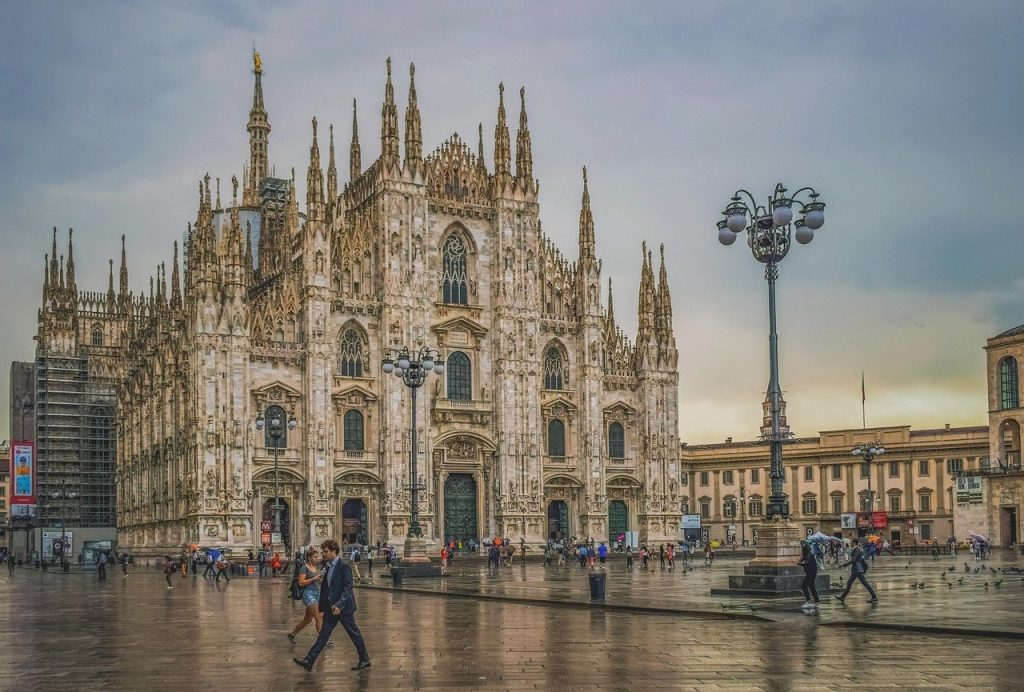
The iconic Piazza del Duomo is the perfect starting point for any visit to Milan. Home to the largest cathedral in Italy – the Duomo di Milano – the square is both the geographical and cultural centre of the city. It is dominated by the Duomo. This incredible architectural gem took over 600 years to complete. Whilst work started in 1386, it wasn’t actually completely finished until 1965, thus resulting in a building which incorporates a vast number of different styles of architecture. Whilst this has led some to view it almost with distaste, I personally cannot see how anyone can fail to be amazed by its beauty which, for me, was made all the more poignant during the COVID-19 pandemic when, on Easter Sunday 2020, Andrea Bocelli shared his ‘Music for Hope’ with the world, culminating in an incredibly moving performance of ‘Amazing Grace’.
These days, visitors can not only marvel at the incredible interior of the cathedral but it is also possible to enjoy a somewhat different perspective on the Duomo, from its rooftop. Accessible either by steps or a lift (ticket prices vary dependent on which you opt for), this is a truly unique experience and well worth doing at least once.
Once you’re back on the ground, why not head to another of the Piazza del Duomo’s attractions – the Museo del Novecento for a rather more modern take on Milan’s history. The museum is home to a wealth of 20th century Italian art, displayed in chronological order dating from 1902 through to the 1980s and includes works by Picasso, Kandinsky and others. It’s a clever way to see how art developed through the century.

For lunch, why not head to Panzerotti Luini, a small bakery nestled just behind the Duomo. The bakery is famous for its panzerotti. This Italian delicacy resembles a calzone pizza, but is deep fried rather than baked, and actually originates not in Milan but in Central and Sothern Italy. The Luini panzerotti bakery has been in the family for generations and their produce is so good that you’ll often find a queue out the door but it’s worth waiting for. Grab a snack, take a seat in the piazza and enjoy the atmosphere!
Afternoon:
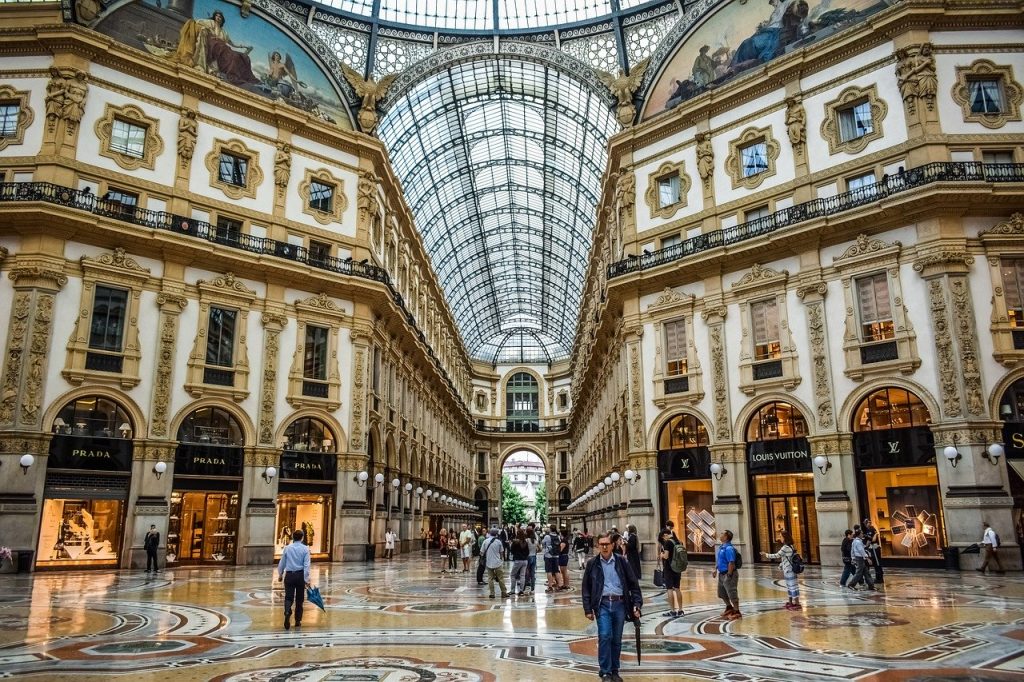
The Duomo is also situated close to what has to be the most beautiful shopping mall in the world – the Galleria Vittorio Emanuele II – which can be your next stop. Named after the first King of Italy, the mall is the oldest in Italy dating back to the end of the 19th century and is filled with high end designer brands. It also connects two of Milan’s most famous landmarks – the Duomo and Teatro Alla Scala, which is our suggested next stop for your first day in Milan.
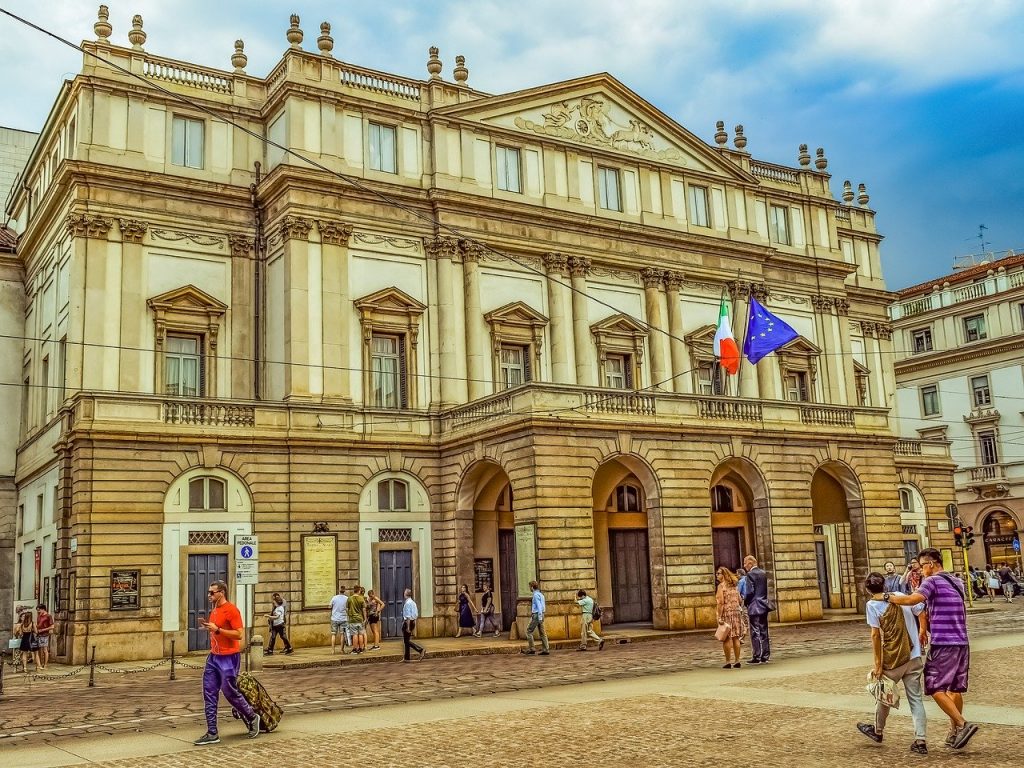
La Scala seats over 3000 people and is one of the world’s most famous opera houses. Over the years, audiences have enjoyed listening to some of the world’s greatest opera singers, musicians and conductors perform some of the world’s most famous compositions here. Visitors can enjoy a tour of this famous building, including a chance to see the main hall, stalls, balcony and stage. Those that are extremely lucky will have the opportunity to enjoy a tour during rehearsal time, witnessing the preparations for the evening performance. The tour also includes a visit to the Scala museum, home to a collection of costumes, instruments, portraits and artworks that paint a picture of the history of this famous theatre over the years.
Evening:
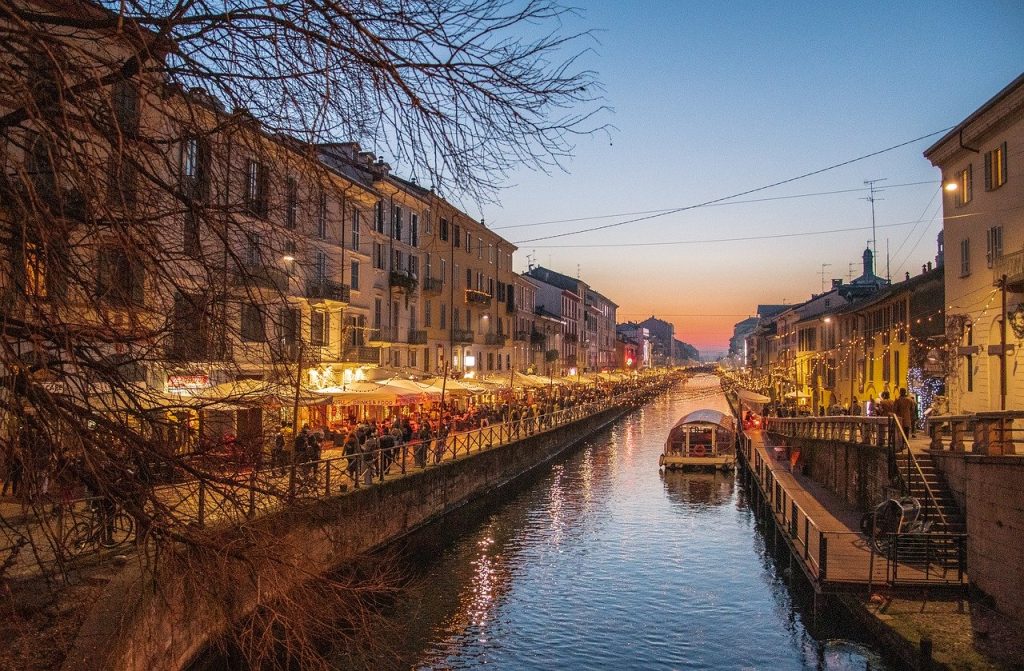
Milan has a lively party scene. Milan residents begin the evening with an aperitivo. Kicking off from as early as 5 pm, bars all over the city lay out plates full of nibbles, from crostini to focaccia and from pasta to vegetables and fish. This is definitely an aspect of Milanese life you don’t want to miss out on. Head to the canal area of the city – I Navigli – to enjoy cocktails with your pre dinner canapes and to also enjoy one of the best places in Milan to watch the sun setting. Few will perhaps realise that, years ago, Milan was a city that used to rely on a network of waterways that criss-crossed the city. It is thanks to the canals that buildings such as the Duomo were built, vital in bringing the marble into the heart of the city. These days, only two remain – the Naviglio Grande and the Naviglio Pavese. If you make it to the canal area early, then why not enjoy a boat tour of the canal or, believe it or not, you can even imagine yourself in Venice and enjoy a cruise aboard a Venetian gondola! And after your aperitivo, there are plenty of reasonably priced restaurants and nightclubs in this area to move onto.
Alternatively, opera lovers may want to consider heading back to enjoy an evening performance at La Scala. Milan’s opera season kicks off on 7 December each year (the feast day of St Ambrose, Milan’s patron saint) and performances go on throughout the year.
Day 2:
Morning:
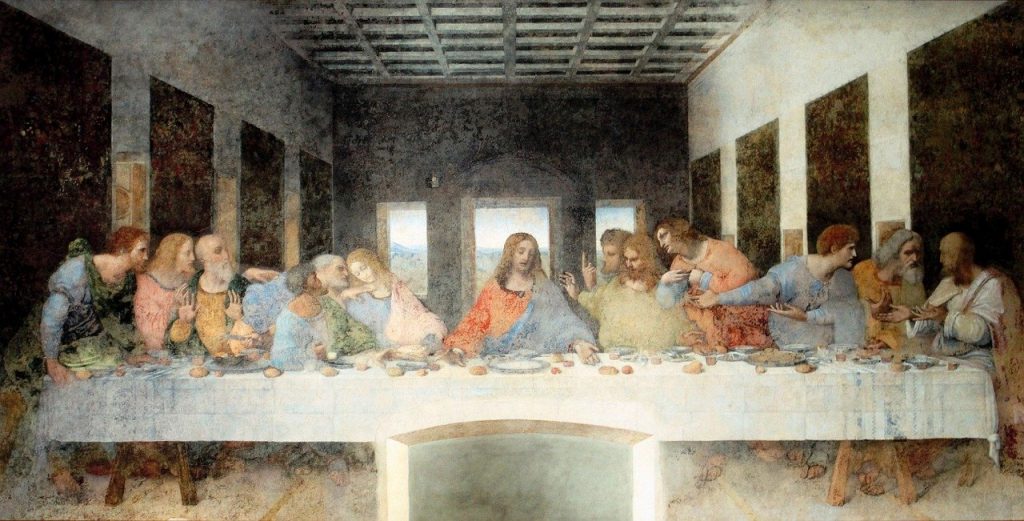
One of the artworks that visitors don’t want to miss when visiting Milan is Leonardo da Vinci’s ‘The Last Supper.’ The incredible artwork is kept in the Convent of Santa Maria delle Grazie. Make sure to book your tickets well in advance to avoid disappointment.
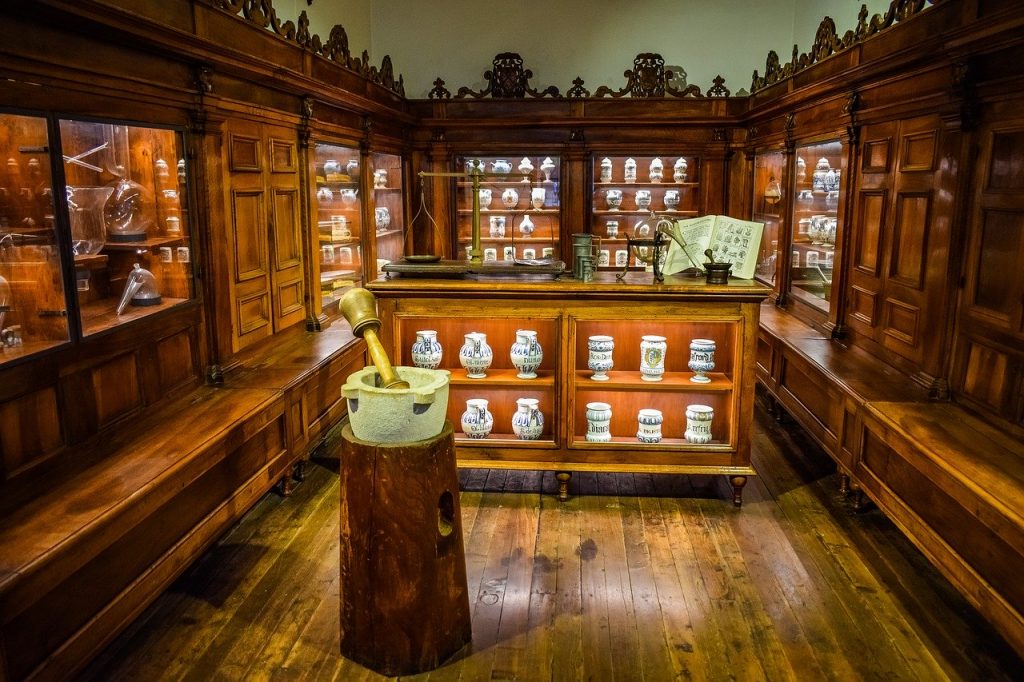
To indulge a bit more in the art, design and engineering abilities of this creative genius, follow up this visit with a trip to Milan’s Science Museum. The museum is home to the largest permanent exhibition in the world dedicated to Leonardo da Vinci, bringing his creations to life.
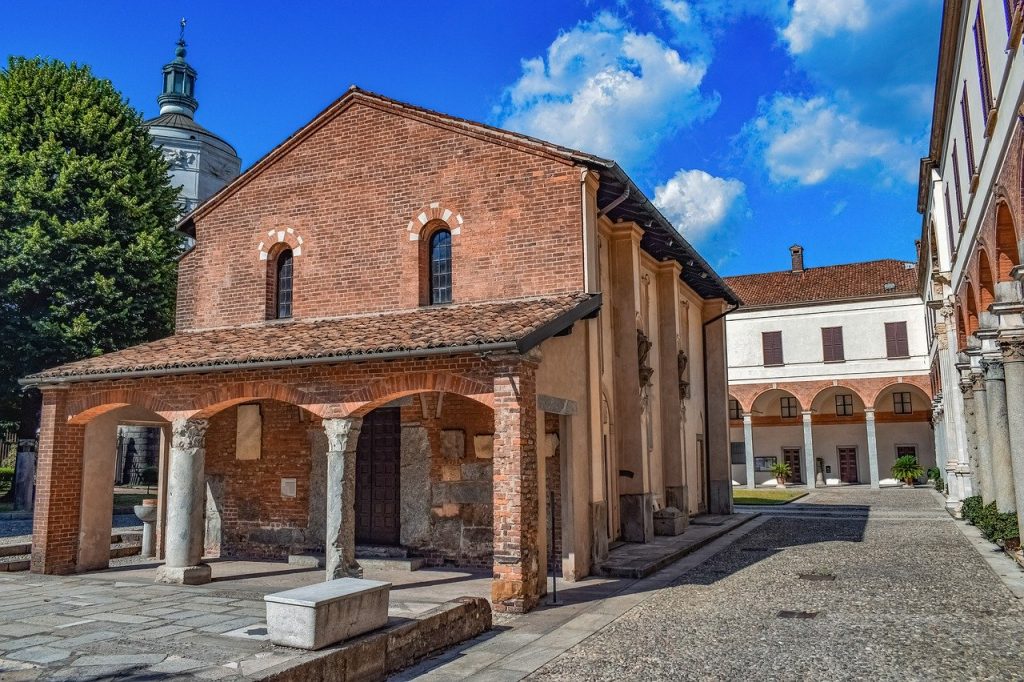
Before leaving this area, it’s worth visiting the Basilica di Sant’ Ambrogio. This is a rather unusual church. The church is one of the oldest in Milan and is named after Milan’s patron saint, however, it has been renovated a number of times since, so that little remains of the original church. The most recent renovations were after WWII due to damage sustained by Allied bombing. Inside, there are a number of interesting artefacts including the remains of St Ambrose and two other saints.
Afternoon:
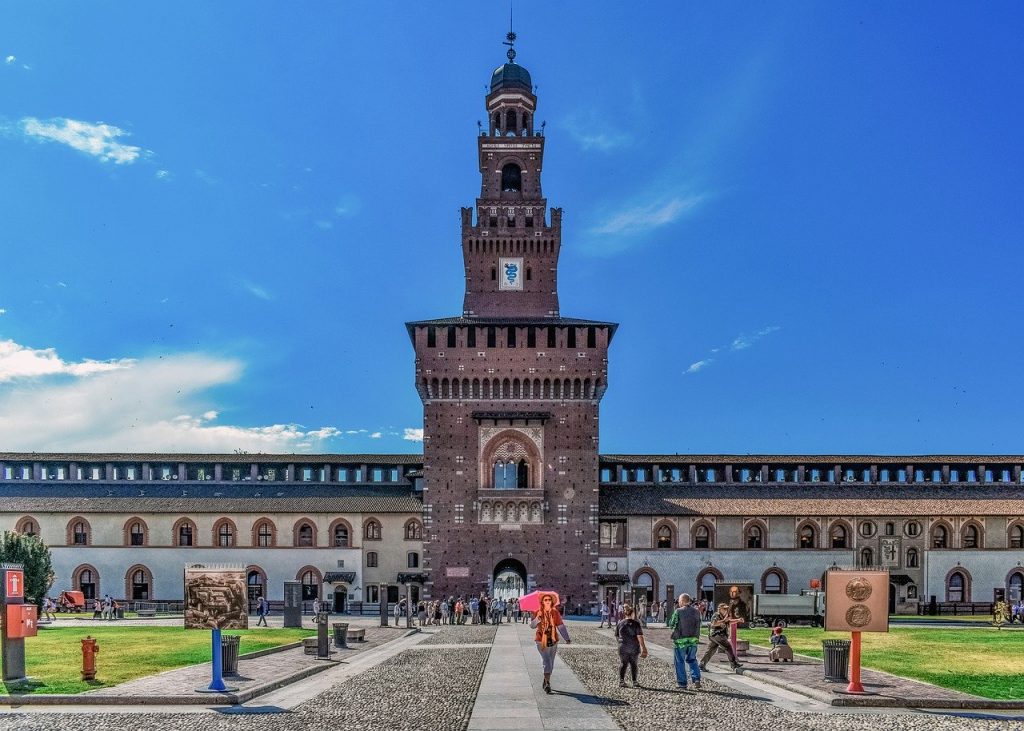
In the afternoon, enjoy a walk from here to the Sforzesco Castle. Built in the 15th century by Francesco Sforza, Duke of Milan, the castle was subsequently enlarged in the 16th and 17th centuries and is now home to several of Milan’s museums including the Pinacoteca which houses a superb collection of Italian paintings and sculpture. Other museums include the Egyptian Museum, Museum of Musical Instruments and Museum of Ancient Art. After you have explored everything there is to see indoors, then head outside to enjoy the park in which the castle is set – the Parco Sempione. The park covers an incredible 95 acres. Walk from the castle all the way through the park to the Arco della Pace (Peace Arch) at the other end. This 19th century arch was initially built to celebrate the victories of Napolean and was known first as the Arco delle Vittorie (Victory Arch) but was renamed the Arch of Peace following the Congress of Peace that was held in Vienna in 1815.
Evening:
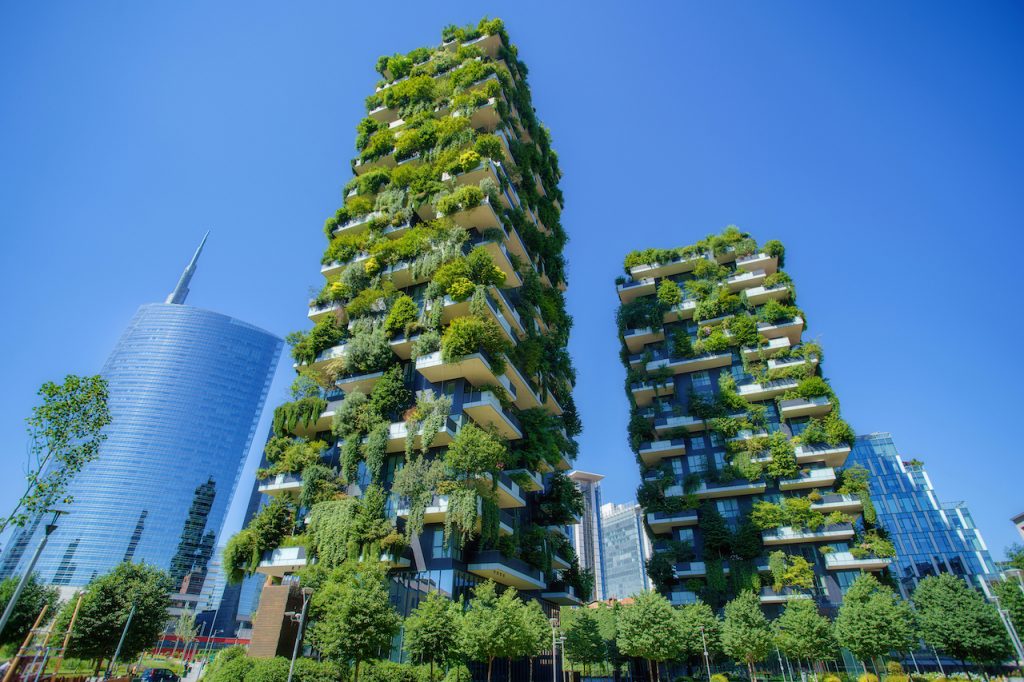
Visitors to Milan are spoilt for choice when it comes to restaurants. For those looking for high dining for your second evening in the city, Milan is home to 20 Michelin starred restaurants. Perhaps head to one of those in the district where you will also find the Bosco Verticale (Vertical Forest), to give you a chance to see this contemporary architectural design. The pair of residential towers contain more than 900 trees, 5000 shrubs and 11,000 perennial plants and provides a vision of the future.
